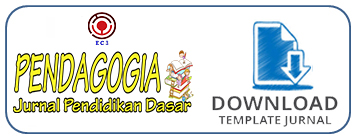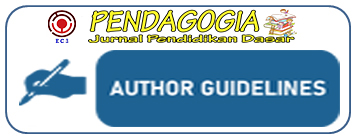Peningkatan Kemampuan Berpikir Kritis dan Penyelesaian Masalah Melalui Model Problem Based Learning (PBL) pada Pembelajaran Tematik Kelas VI SDN 19 Cakranegara
Keywords:
Problem Based Learning (PBL), critical thinking, problem solving, HOTSAbstract
The ability to think critically and solve HOTS questions for grade VI students of SDN 19 Cakranegara for the 2019/2020 academic year is not as expected. This condition can be seen from the number of students who have not met the Minimum Completeness Criteria for MTK subjects, which is 70. This problem occurs because of the lack of critical thinking skills and problem solving on HOTS-based math problems. To overcome this, researchers made improvements using a problem based learning (PBL) model. This study aims to improve critical thinking skills and problem solving HOTS questions for grade VI students of SDN 19 Cakranegara by applying a problem based learning (PBL) model. This type of research is Classroom Action Research which is carried out in 2 cycles, each cycle consists of 4 stages, namely planning, implementing actions, observing and evaluating, and reflecting. The subjects of this study were students of class VI. Data on students' critical thinking and problem solving abilities were collected through written tests given at the end of each cycle. Based on the results of the study obtained data on increasing students' critical thinking skills in the first cycle of 6.81%, increasing in the second cycle of 9.46%. In addition, there was an increase in student problem solving in the first cycle of 10.14%, an increase in the second cycle of 11.96%. The conclusion of this study is that the application of the problem based learning (PBL) model can improve critical thinking skills and problem solving HOTS questions for class VI SDN 19 Cakranegara Academic Year 2019/2020.
Downloads
References
Adams, D., & Hamm, M. (2010). Demystify math, science, and technology: creativity, innovation, and problem solving. Lanham: Library Materials.
Arikunto, S. (2009). Dasar-Dasar Evaluasi Pendidikan. Jakarta: Rineka Cipta.
Butterworth, J. & Thwaite, G. (2013). Thinking Skills: Critical Thinking and Problem Solving.
Cambridge: Cambridge university press
Changwong, K, Sukkamart, A., & Sisan, B. (2018). Critical Thinking Skill Development: Analysis of a New Learning Management Model for Thai High School. Journal of International Studies, 11(2), 37-48. Doi: 10.14254/2071-8330.2018/11-2/3
Effendi, A. (2017). Implementation of Creative Problem Solving Model to Improve The High School Students Metacognitive. Journal of Physic: Conference Series, 812 (1), 1-5
Greenstein, L. (2012). Assessing 21st century skills: a guide to evaluating mastery and authentic learning. Assessing 21st century skills: a guide to evaluating mastery and authentic learning.
Johnson, Elaine. (2007). Contextual Teaching & Learning; Menjadikan. Kegiatan Belajar-Mengajar Mengasyikan dan Bermakna. Bandung : MLC
Kamin, C. S., O’Sullivan, P. S., Younger, M., & Deterding, R. (2001). Measuring Critical Thinking in Problem-Based Learning Discourse. Teaching and Learning in Medicine, 13(1), 27–35. https://doi.org/10.1207/S15328015TLM1 301_6
Kemmis, S. and Mc Taggart, R. (1988). The Action Research Planner. Victoria: Deakin University Press.
Khan, S., Hafeez, A., & Saeed, M. (2012). The Impact of Problem Solving Skill Of Heads On Students’ Academic Achievement. Interdisciplinary Journal of Contemporary Research in Business, 4(1) 316-321
Kirkley, J. & Foshay, R. (2003). Principles for Teaching Problem Solving. Bloomington: plato learning, Inc.
Voss, J. F., et al. (1983). Problem Solving In Social Science. The Psychologyof Learning And Motivation, 12 https://www.sciencedirect.com/science/a rticle/pii/S0079742108600997
Weiss, G. (2017). Problem-Oriented Learning in Geography Education: Construction of Motivating Problems. Journal of Geography, 116(5), 206–216. https://doi.org/10.1080/00221341.2016.1 272622.
Wisudawati & Sulistyowati (2015). Metodologi Pembelajaran IPA. Jakarta: PT. Bumi Aksara.
Zakaria, E., & Ngah, N. (2011). A Preliminary Analysis of Students’ Problem-Posing Ability and Its Relationship to Attitudes Towards Problem Solving. Research Journal of Applied Sciences, Engineering And Technology, 3(9), 866-879.
Downloads
Published
Issue
Section
License
Copyright (c) 2021 Pendagogia: Jurnal Pendidikan Dasar

This work is licensed under a Creative Commons Attribution-NonCommercial-ShareAlike 4.0 International License.








